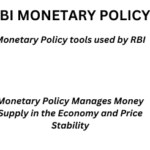Infant mortality rate highest in MP, lowest in Kerala

Madhya Pradesh has recorded the highest infant mortality rate(IMR) of 48 for every 1,000 live births while Kerala has registered the lowest — just seven, according to the latest data of the Registrar General and Census Commissioner of India. The data showed the infant mortality rate in India has improved, albeit slightly, from 33 in 2017 to 32 in 2018.
Bihar has the highest birth rate at 26.2 and Andaman and Nicobar Islands has a birth rate of 11.2. Chhattisgarh has the highest death rate at 8 and Delhi has a death rate of 3.3.
The death rate in India has witnessed a significant decline over the last four decades from 14.9 in 1971 to 6.2 in 2018. The decline has been steeper in rural areas. In the last decade, the death rate at an all-India level has declined from 7.3 to 6.2.The corresponding decline in rural areas is 7.8 to 6.7 and in urban areas, 5.8 to 5.1.
The birth rate is a crude measure of fertility of a population and a crucial determinant of population growth. India’s birth rate has declined drastically over the last four decades from 36.9 in 1971 to 20.0 in 2018. The rural-urban differential has also narrowed.
However, the birth rate has continued to be higher in rural areas compared to urban areas in the last four decades.
There has been about an 11 per cent decline in the birth rate in the last decade, from 22.5 in 2009 to 20.0 in 2018.The corresponding decline in rural areas is 24.1 to 21.6, and in urban areas, it is 18.3 to 16.7.
LEARNING WITH TIMES/WITHOUT CLASSES/FROM HOME/BASICS
IMR: The death of a baby before his or her first birthday is called infant mortality. The infant mortality rate is the number of infant deaths that occur for every 1,000 live births.
NNR:A neonatal death is defined as a death during the first 28 days of life (0-27 days) per 1000 live births
TFR:The total fertility rate in a specific year is defined as the total number of children that would be born to each woman if she were to live to the end of her child-bearing years and give birth to children in alignment with the prevailing age-specific fertility rates.
The National Rural Health Mission:Reducing maternal and child mortality are among the most important goals of the National Rural Health Mission. (NRHM) ,launched on 12th April 2005, is a National effort at ensuring effective healthcare through a range of interventions at individual, household, community, and most critically at the health system levels.
Maternity Benefit Scheme: Scheme to provide financial aid of Rs 6,000 to pregnant women who undergo institutional delivery for hospital admission. The sum is also meant to help with their child’s vaccination, as well as nutritional food.
Janani Surakhsa Yojana (JSY) which is a cash-based incentive of Rs 1,400 for institutional deliver





0 Comments